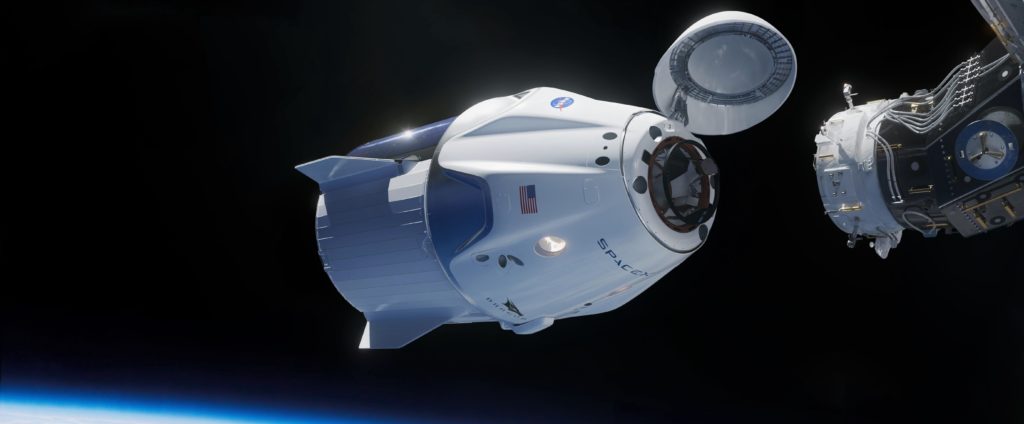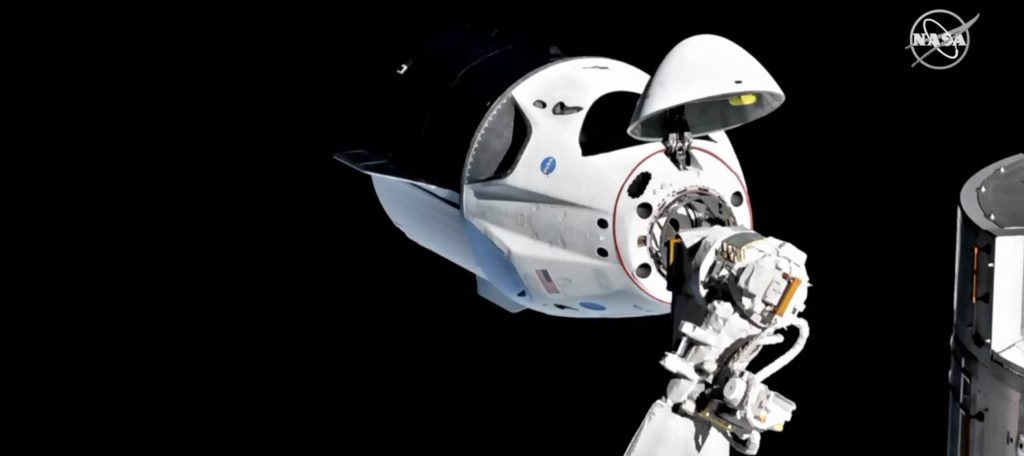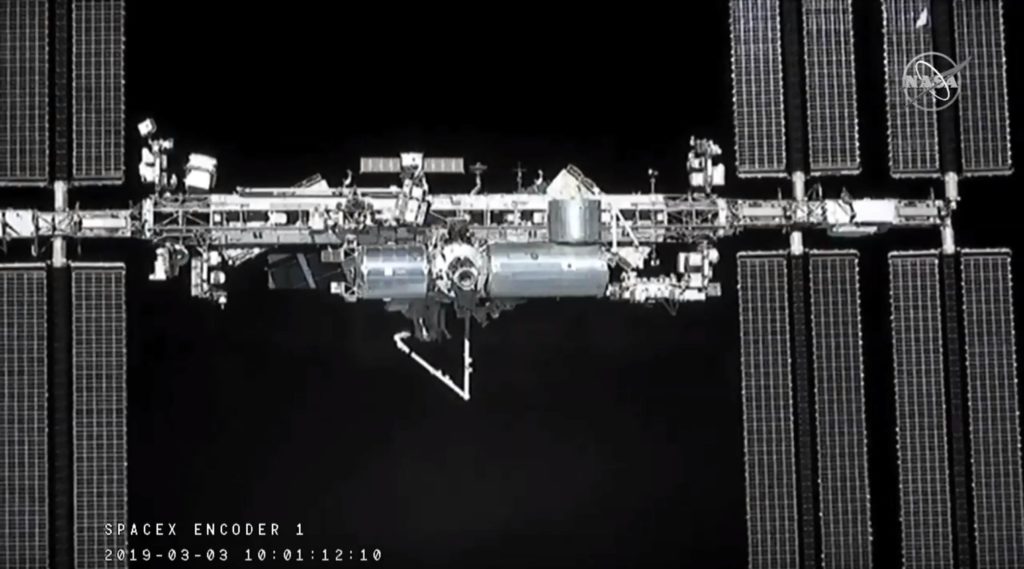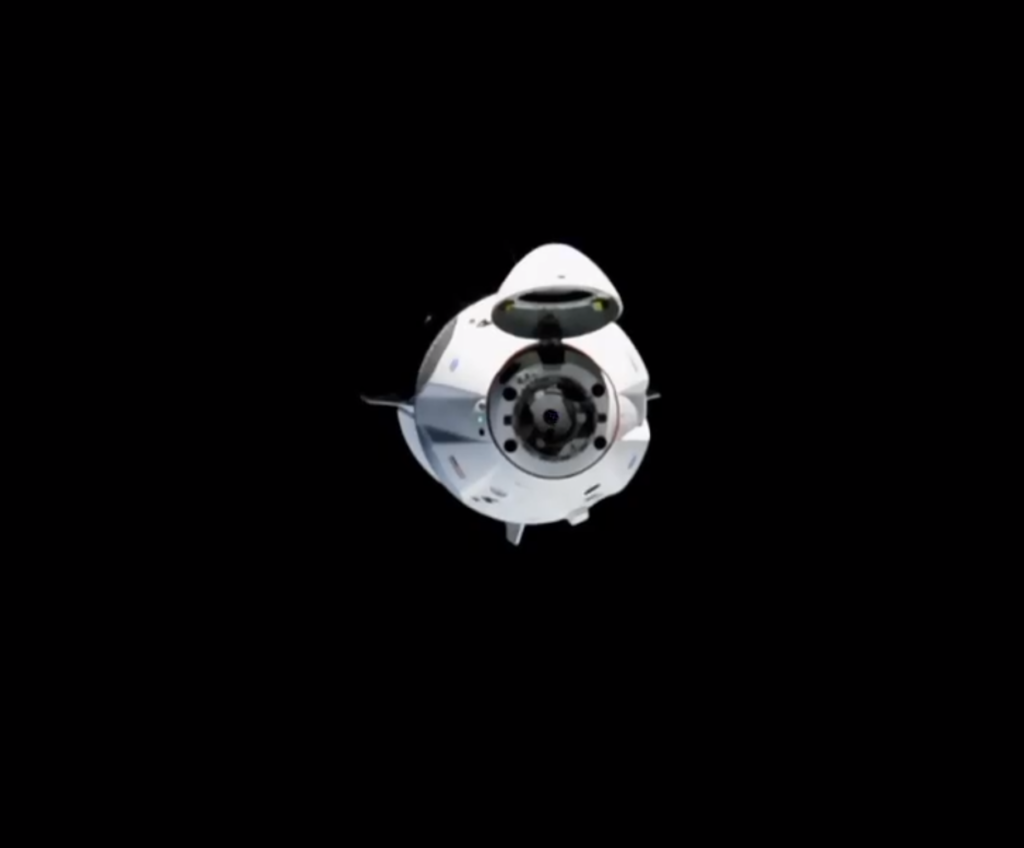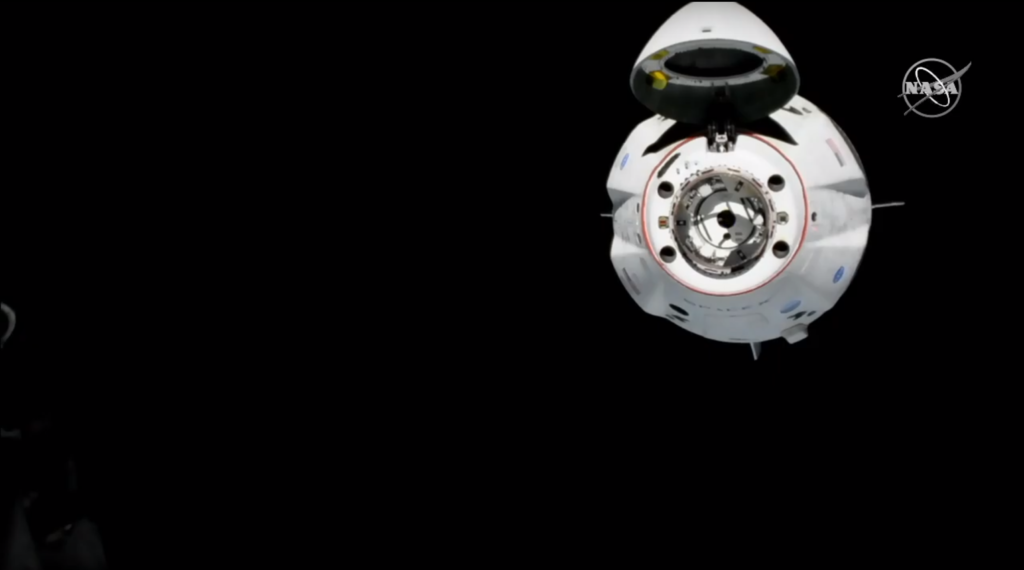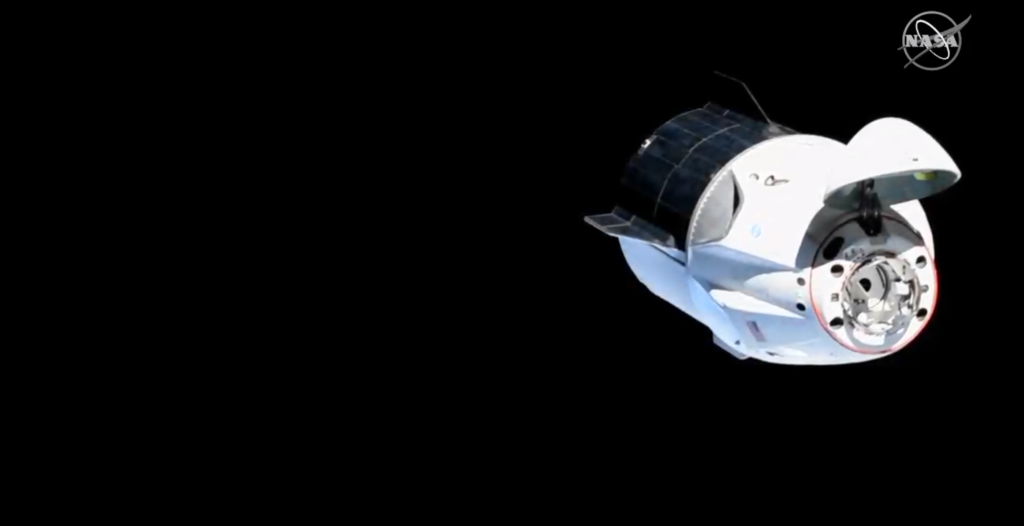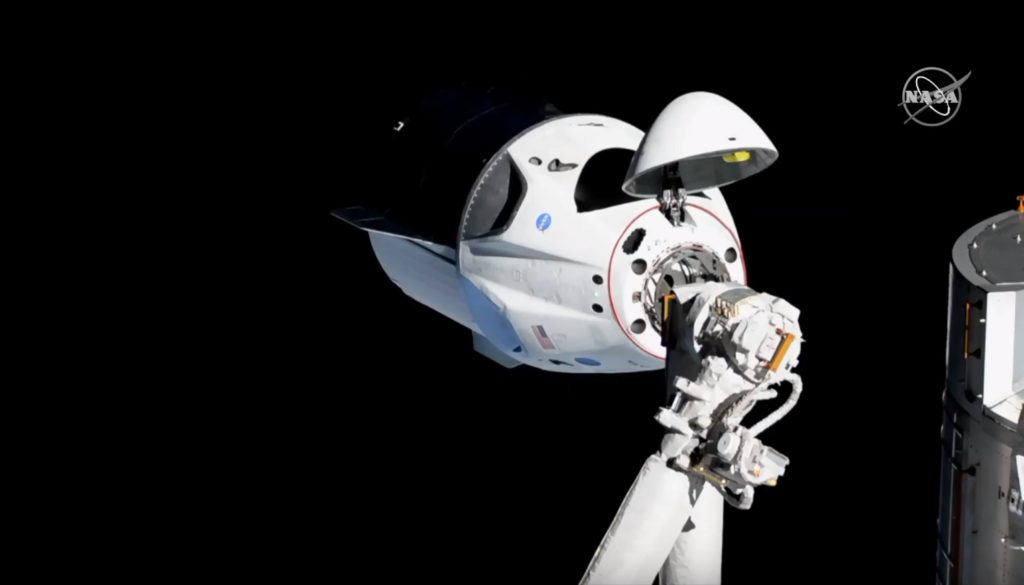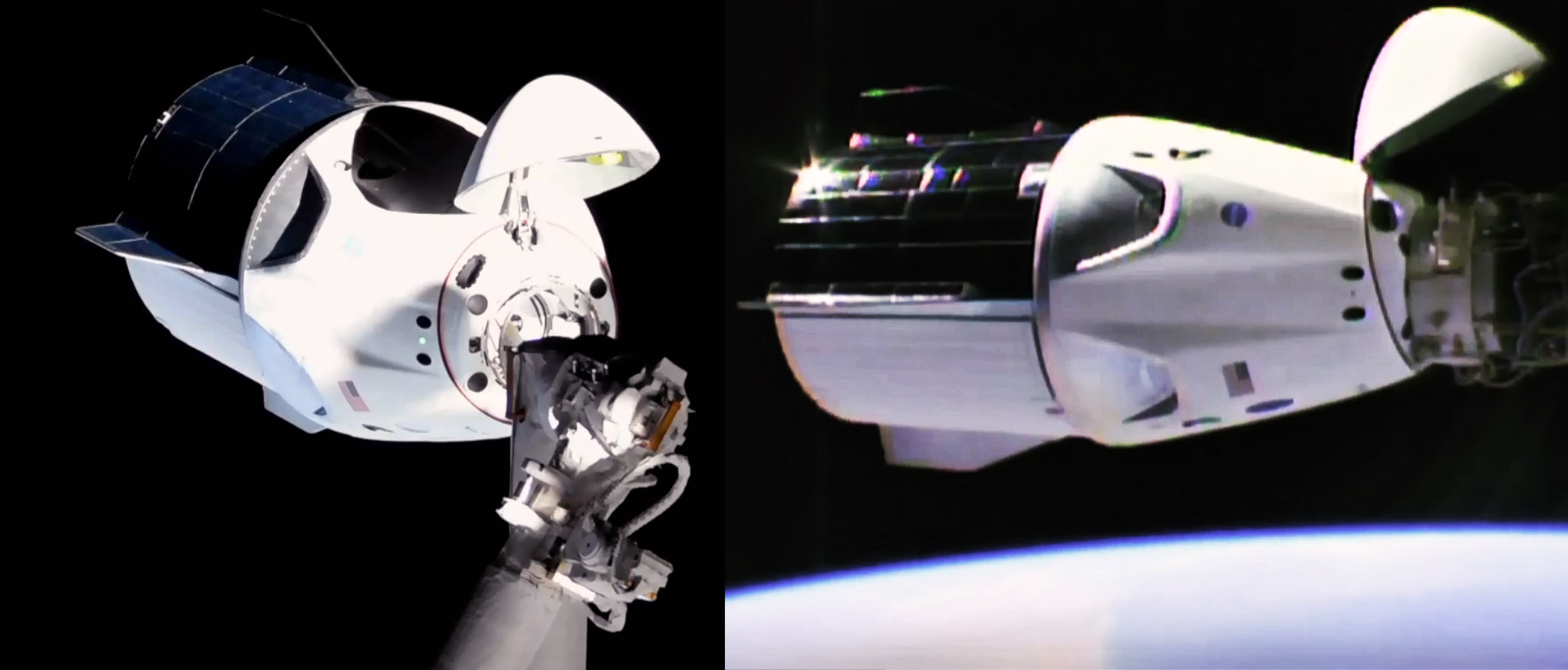

SpaceX
SpaceX’s Crew Dragon flawlessly docks with space station in spectacular orbital debut
Nearly half a decade and millions of hours of work have finally paid off after SpaceX’s Crew Dragon pulled off a flawless orbital debut, launching atop the first crew-rated Falcon 9 and docking with the International Space Station (ISS) a little over 24 hours later.
For what CEO Elon Musk described as a spacecraft with barely a part shared with the company’s already operational Cargo Dragon, such an unremarkable (in terms of surprises) launch debut is a massive achievement that speaks directly to the success of the NASA-SpaceX partnership and the exhaustive design, testing, and optimization directed at Crew Dragon. Having now completed two major trials – launch and docking – for DM-1, the spacecraft’s third and final hurdle will occur on March 8th when it attempts to safely return to Earth.
SpaceX team in Hawthorne control, Dragon docked to Station above pic.twitter.com/JUWkOrWjsH
— Elon Musk (@elonmusk) March 3, 2019
Beginning around 3:30 am and lasting til 10:45 am EST (08:30-15:45 UTC), SpaceX and NASA employees hosted live coverage of Crew Dragon’s inaugural visit to the International Space Station (ISS), a process that included multiple demonstrations of the spacecraft’s ability to approach, halt, and reverse. Almost ten minutes ahead of schedule, Crew Dragon successfully docked with the ISS in a first for SpaceX, having previously only conducted berthings with its Cargo Dragon vehicle.
- From render…
- to reality. (SpaceX/NASA)
Having also debuted a previously untested docking adapter (the International Docking Adapter, IDA), the Station’s three astronauts worked to open Dragon’s hatch, a task which they completed an hour or two after “capture”. This was rapidly followed by the astronauts entering SpaceX’s Crew Dragon, another historic first for the crew-rated spacecraft. They were greeted by Ripley (also known as Starwoman) and what Anne McClain described as small Earth, the stuffed globe that was included partially as a joke and a “super high tech zero-g indicator” according to Musk. After determining that Crew Dragon’s atmosphere was non-toxic, the astronauts removed breathing masks and returned to the capsule’s interior to formally welcome it to the ISS as the world’s newest orbital spacecraft, as well as the first commercially-developed vehicle meant to carry humans into orbit.
The dawn of a new era in human spaceflight pic.twitter.com/BHsfg1zYLN
— COL Anne McClain (@AstroAnnimal) March 3, 2019
While it may be unintuitive, the two dozen or so relatively slow and quiet hours that followed Crew Dragon’s launch were and remain far more important, and the spacecraft’s flawless on-orbit performance has thus far retired a huge number of concerns front and center for the first true launch of any spacecraft, let alone one designed specifically to carry astronauts and keep them safe. Thus far, Crew Dragon has done exactly that, approaching the ISS and docking with nary a hiccup, as if the rendezvous was the umpteenth and nothing out of the ordinary.
Technical achievements aside, the live coverage of Crew Dragon’s patient approach was perhaps some of the most spectacular and emotionally compelling content yet provided by SpaceX and NASA. At one point, as orbital sunset neared, a NASA ground controller requested that the spacecraft’s onboard spotlight be enabled to continue the docking approach, to which the SpaceX engineer hosting the webcast remarked on just how incredible and surreal it was to watch Crew Dragon methodically approach the station from less than 100 feet away. In fact, he had apparently spent “months” with that very same LED spotlight array on his desk, working to build, qualify, and test it to ensure that the light system was ready for spaceflight, just one of hundreds or thousands of seemingly minute details that one or several employees spent major portions of their lives working on.
- A live view of the ISS from cameras aboard Crew Dragon. (NASA/SpaceX)
- (NASA)
- (NASA)
- A better view of the solar array half of Crew Dragon’s trunk section. (NASA)
- (NASA)
- (NASA)
Come launch and on-orbit operations, SpaceX and NASA employees across the US hung on this mission’s every step with a singular nervousness, focus, and pride that easily beat even the buzz that surrounded Falcon Heavy’s iconic launch debut. Humanity as a whole may have paid significantly less attention to Crew Dragon’s launch debut, but almost every SpaceX employee appeared readily cognizant of the fact that this mission symbolized something radically more important and more fundamental to the company. Founded to ultimately help humanity take permanent steps beyond Earth orbit, Crew Dragon’s thus far flawless debut brings SpaceX as close as its ever been to shouldering the heavy responsibility of launching humans into space, be they NASA astronauts, paying tourists, or Martian hopefuls.
If all continues to proceed apace, DM-1 will conclude with Crew Dragon’s first orbital-velocity reentry on March 8th. Pending that capsules refurbishment and an equally bug-free in-flight abort test NET April to June, SpaceX and NASA could conduct the first crewed launch of Crew Dragon less than six months from now in July 2019. Much work lies ahead and delays are undeniably possible (if not probably), but – as they say – so far, so good.
Check out Teslarati’s newsletters for prompt updates, on-the-ground perspectives, and unique glimpses of SpaceX’s rocket launch and recovery processes!
News
SpaceX’s Crew-11 mission targets July 31 launch amid tight ISS schedule
The flight will lift off from Launch Complex 39A at Kennedy Space Center in Florida.
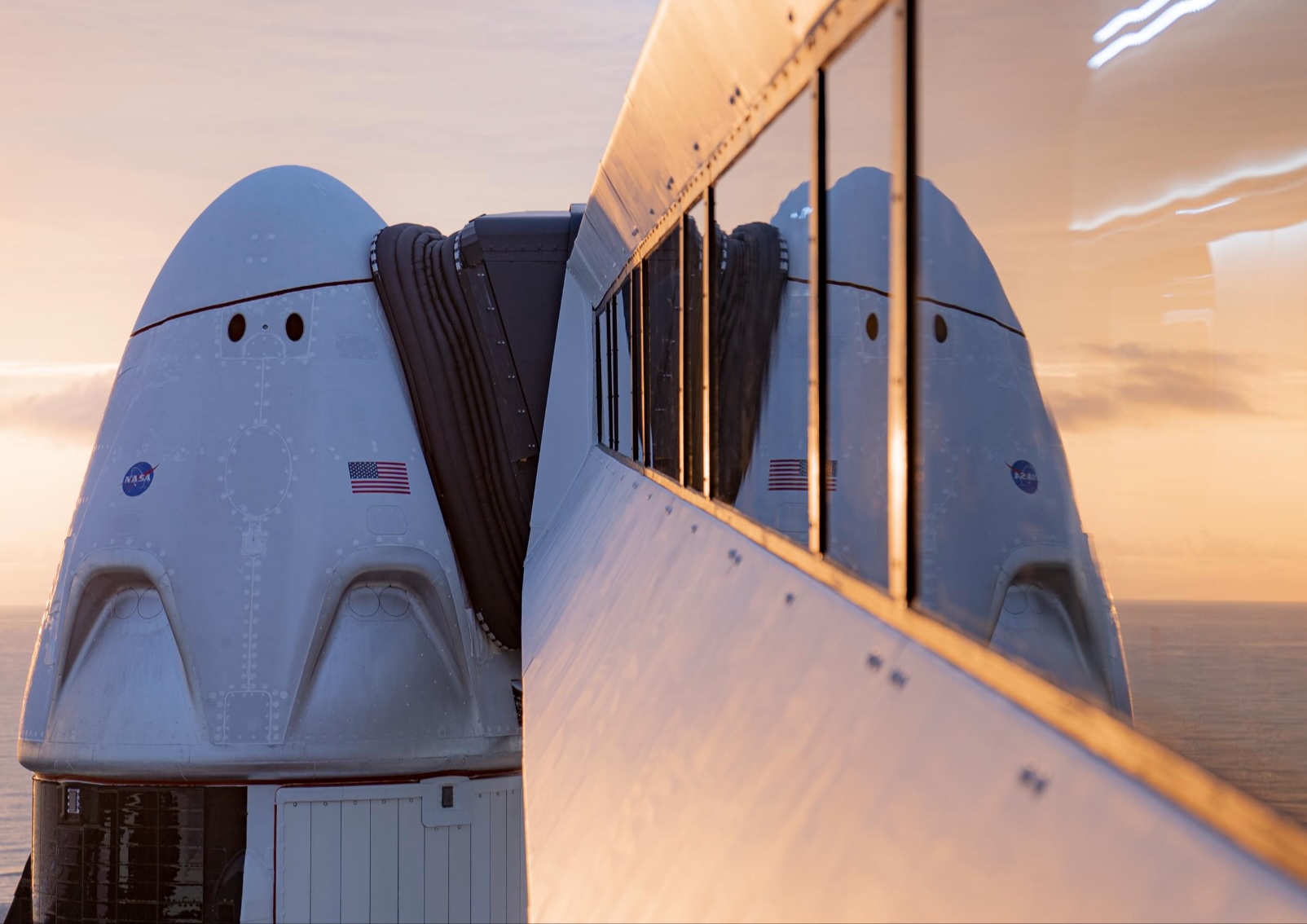
NASA and SpaceX are targeting July 31 for the launch of Crew-11, the next crewed mission to the International Space Station (ISS). The flight will lift off from Launch Complex 39A at Kennedy Space Center in Florida, using the Crew Dragon Endeavour and a Falcon 9 booster.
Crew Dragon Endeavour returns
Crew-11 will be the sixth flight for Endeavour, making it SpaceX’s most experienced crew vehicle to date. According to SpaceX’s director of Dragon mission management, Sarah Walker, Endeavour has already carried 18 astronauts representing eight countries since its first mission with NASA’s Bob Behnken and Doug Hurley in 2020, as noted in an MSN report.
“This Dragon spacecraft has successfully flown 18 crew members representing eight countries to space already, starting with (NASA astronauts) Bob (Behnken) and Doug (Hurley) in 2020, when it returned human spaceflight capabilities to the United States for the first time since the shuttle retired in July of 2011,” Walker said.
For this mission, Endeavour will debut SpaceX’s upgraded drogue 3.1 parachutes, designed to further enhance reentry safety. The parachutes are part of SpaceX’s ongoing improvements to its human-rated spacecraft, and Crew-11 will serve as their first operational test.
The Falcon 9 booster supporting this launch is core B1094, which has launched in two previous Starlink missions, as well as the private Ax-4 mission on June 25, as noted in a Space.com report.
The four-members of Crew-11 are NASA astronauts Zena Cardman and Mike Fincke, as well as Japan’s Kimiya Yui and Russia’s Oleg Platonov.
Tight launch timing
Crew-11 is slated to arrive at the ISS just as NASA coordinates a sequence of missions, including the departure of Crew-10 and the arrival of SpaceX’s CRS-33 mission. NASA’s Bill Spetch emphasized the need for careful planning amid limited launch resources, noting the importance of maintaining station altitude and resupply cadence.
“Providing multiple methods for us to maintain the station altitude is critically important as we continue to operate and get the most use out of our limited launch resources that we do have. We’re really looking forward to demonstrating that capability with (CRS-33) showing up after we get through the Crew-11 and Crew-10 handover,” Spetch stated.
News
SpaceX launches Ax-4 mission to the ISS with international crew
The SpaceX Falcon 9 launched Axiom’s Ax-4 mission to ISS. Ax-4 crew will conduct 60+ science experiments during a 14-day stay on the ISS.
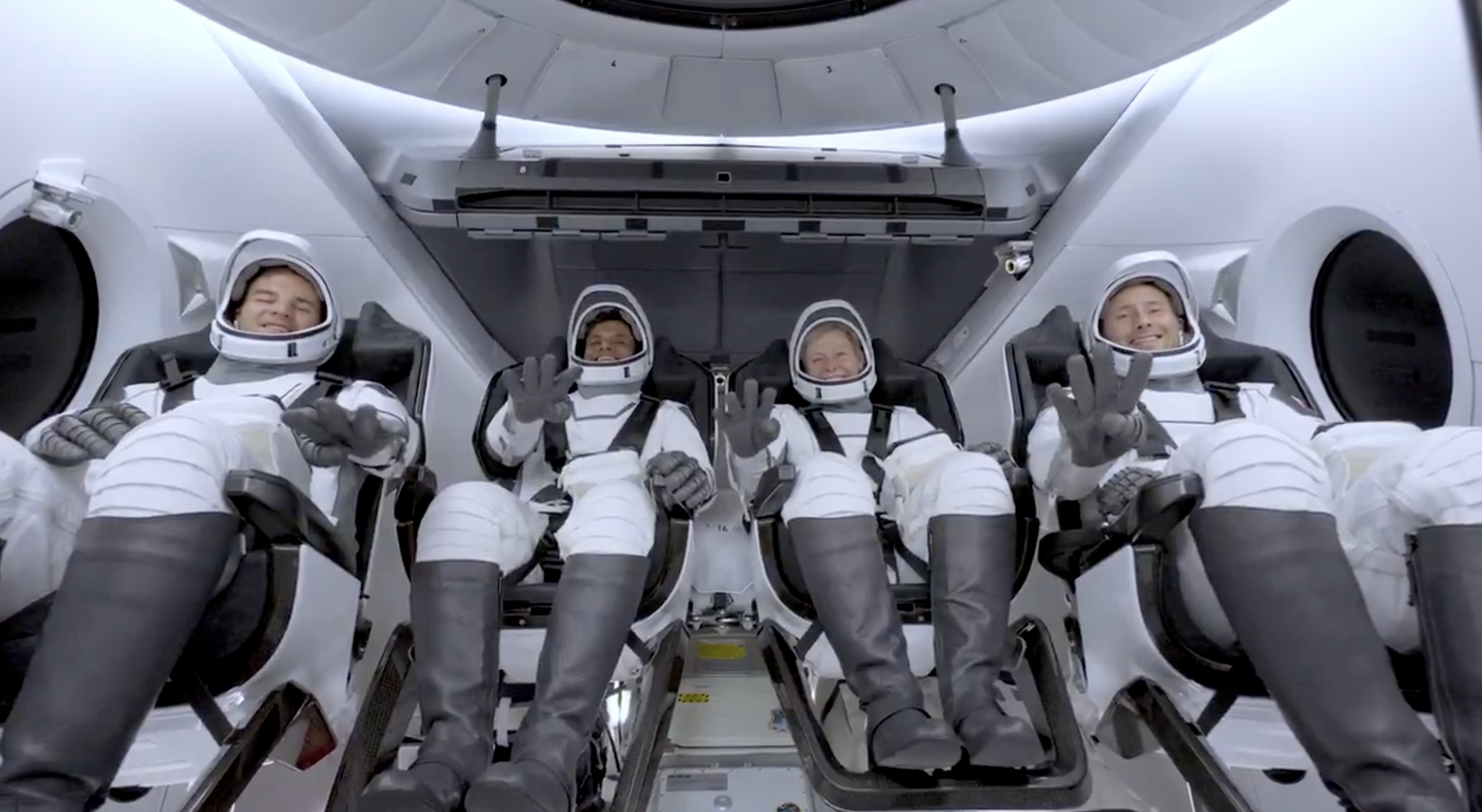
SpaceX launched the Falcon 9 rocket kickstarting Axiom Space’s Ax-4 mission to the International Space Station (ISS). Axiom’s Ax-4 mission is led by a historic international crew and lifted off from Kennedy Space Center’s Launch Complex 39A at 2:31 a.m. ET on June 25, 2025.
The Ax-4 crew is set to dock with the ISS around 7 a.m. ET on Thursday, June 26, 2025. Axiom Space, a Houston-based commercial space company, coordinated the mission with SpaceX for transportation and NASA for ISS access, with support from the European Space Agency and the astronauts’ governments.
The Ax-4 mission marks a milestone in global space collaboration. The Ax-4 crew, commanded by U.S. astronaut Peggy Whitson, includes Shubhanshu Shukla from India as the pilot, alongside mission specialists Sławosz Uznański-Wiśniewski from Poland and Tibor Kapu from Hungary.
“The trip marks the return to human spaceflight for those countries — their first government-sponsored flights in more than 40 years,” Axiom noted.
Shukla’s participation aligns with India’s Gaganyaan program planned for 2027. He is the first Indian astronaut to visit the ISS since Rakesh Sharma in 1984.
Axiom’s Ax-4 mission marks SpaceX’s 18th human spaceflight. The mission employs a Crew Dragon capsule atop a Falcon 9 rocket, designed with a launch escape system and “two-fault tolerant” for enhanced safety. The Axiom mission faced a few delays due to weather, a Falcon 9 leak, and an ISS Zvezda module leak investigation by NASA and Roscosmos before the recent successful launch.
As the crew prepares to execute its scientific objectives, SpaceX’s Ax-4 mission paves the way for a new era of inclusive space research, inspiring future generations and solidifying collaborative ties in the cosmos. During the Ax-4 crew’s 14-day stay in the ISS, the astronauts will conduct nearly 60 experiments.
“We’ll be conducting research that spans biology, material, and physical sciences as well as technology demonstrations,” said Whitson. “We’ll also be engaging with students around the world, sharing our experience and inspiring the next generation of explorers.”
SpaceX’s Ax-4 mission highlights Axiom’s role in advancing commercial spaceflight and fostering international partnerships. The mission strengthens global space exploration efforts by enabling historic spaceflight returns for India, Poland, and Hungary.
News
Starlink Cellular’s T-Mobile service to grow with third-party app data
From Oct 2025, T-Satellite will enable third-party apps in dead zones! WhatsApp, X, AccuWeather + more coming soon.

Starlink Cellular’s T-Mobile service will expand with third-party app data support starting in October, enhancing connectivity in cellular dead zones.
T-Mobile’s T-Satellite, supported by Starlink, launches officially on July 23. Following its launch, T-Mobile’s Starlink Cellular service will enable data access for third-party apps like WhatsApp, X, Google, Apple, AccuWeather, and AllTrails on October 1, 2025.
T-Mobile’s Starlink Cellular is currently in free beta. T-Satellite will add MMS support for Android phones on July 23, with iPhone support to follow. MMS support allows users to send images and audio clips alongside texts. By October, T-Mobile will extend emergency texting to all mobile users with compatible phones, beyond just T-Mobile customers, building on its existing 911 texting capability. The carrier also provides developer tools to help app makers integrate their software with T-Satellite’s data service, with plans to grow the supported app list.
T-Mobile announced these updates during an event celebrating an Ookla award naming it the best U.S. phone network, a remarkable turnaround from its last-place ranking a decade ago.
“We not only dream about going from worst to best, we actually do it. We’re a good two years ahead of Verizon and AT&T, and I believe that lead is going to grow,” said T-Mobile’s Chief Operating Officer Srini Gopalan.
T-Mobile unveiled two promotions for its Starlink Cellular services to attract new subscribers. A free DoorDash DashPass membership, valued at $10/month, will be included with popular plans like Experience Beyond and Experience More, offering reduced delivery and service fees. Meanwhile, the Easy Upgrade promotion targets Verizon customers by paying off their phone balances and providing flagship devices like the iPhone 16, Galaxy S25, or Pixel 9.
T-Mobile’s collaboration with SpaceX’s Starlink Cellular leverages orbiting satellites to deliver connectivity where traditional networks fail, particularly in remote areas. Supporting third-party apps underscores T-Mobile’s commitment to enhancing user experiences through innovative partnerships. As T-Satellite’s capabilities grow, including broader app integration and emergency access, T-Mobile is poised to strengthen its lead in the U.S. wireless market.
By combining Starlink’s satellite technology with strategic promotions, T-Mobile is redefining mobile connectivity. The upcoming third-party app data support and official T-Satellite launch mark a significant step toward seamless communication, positioning T-Mobile as a trailblazer in next-generation wireless services.
-

 News3 days ago
News3 days agoTesla debuts hands-free Grok AI with update 2025.26: What you need to know
-

 Elon Musk1 week ago
Elon Musk1 week agoElon Musk confirms Grok 4 launch on July 9 with livestream event
-

 Elon Musk6 days ago
Elon Musk6 days agoxAI launches Grok 4 with new $300/month SuperGrok Heavy subscription
-

 News2 weeks ago
News2 weeks agoTesla Model 3 ranks as the safest new car in Europe for 2025, per Euro NCAP tests
-

 Elon Musk2 weeks ago
Elon Musk2 weeks agoxAI’s Memphis data center receives air permit despite community criticism
-

 News5 days ago
News5 days agoTesla begins Robotaxi certification push in Arizona: report
-

 Elon Musk2 weeks ago
Elon Musk2 weeks agoTesla reveals it is using AI to make factories more sustainable: here’s how
-

 Elon Musk2 weeks ago
Elon Musk2 weeks agoTesla scrambles after Musk sidekick exit, CEO takes over sales

